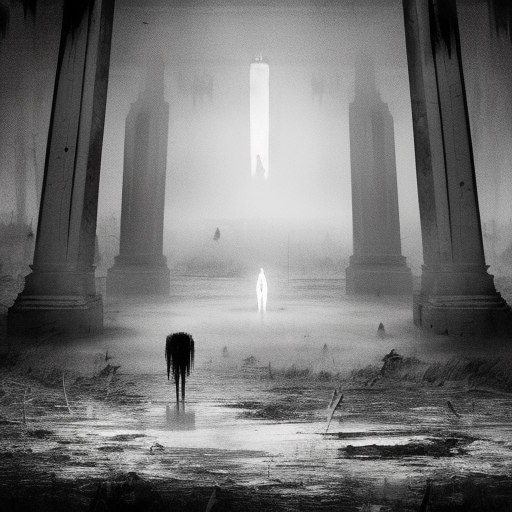The Turn of the Screw: A Haunting Tale of Ghosts and Madness
In “The Turn of the Screw” by Henry James, a young governess is hired to care for two orphaned children at a remote country estate. As she begins her duties, she becomes convinced that the house is haunted and that the children are being influenced by malevolent spirits. This classic ghost story explores themes of psychological suspense, the nature of evil, and the blurred line between reality and imagination.
A Mysterious Assignment at Bly
The story begins with the unnamed governess eagerly accepting a position at Bly, a grand estate in the English countryside. Her employer, a wealthy bachelor named Uncle, gives her complete control over the upbringing of his niece, Flora, and nephew, Miles. The only condition is that he is to be kept completely unaware of any issues or concerns that may arise.
Ghosts and Apparitions
Shortly after her arrival, the governess begins to see strange figures lurking around the property. She becomes convinced that these apparitions are the ghosts of the former governess, Miss Jessel, and the valet, Peter Quint, who had both died under mysterious circumstances. The governess believes that the children can also see these spirits but are keeping it a secret.
As the story progresses, the governess becomes increasingly obsessed with protecting the children from the influence of the ghosts. She sees the spirits as corrupting forces, intent on possessing the children’s souls. The governess becomes convinced that the children are not innocent victims but active participants in a sinister plot.
A Battle of Good and Evil
The governess’s determination to save the children leads her to confront the apparitions directly. She believes that by exposing the ghosts and their intentions, she can free the children from their influence. However, her efforts only seem to escalate the supernatural occurrences, and the line between reality and imagination becomes increasingly blurred.
As the story reaches its climax, the governess’s mental state deteriorates, and she becomes consumed by her obsession. The question arises: are the ghosts real, or are they figments of her imagination? The ambiguity of the ghosts’ existence adds to the psychological suspense of the story, leaving readers to question the true nature of evil.
Key Takeaways:
- The Turn of the Screw is a classic ghost story that explores themes of psychological suspense and the blurred line between reality and imagination.
- The governess becomes convinced that the children are being influenced by malevolent spirits and becomes obsessed with protecting them.
- The story raises questions about the nature of evil and the reliability of the governess’s perceptions.
“The story had held us, round the fire, sufficiently breathless, but except the obvious remark that it was gruesome, as, on Christmas Eve in an old house, a strange tale should essentially be, I remember no comment uttered till somebody happened to say that it was the only case he had met in which such a visitation had fallen on a child.”
In “The Turn of the Screw,” Henry James weaves a haunting tale that keeps readers on the edge of their seats. The psychological suspense, the battle between good and evil, and the ambiguity of the ghosts’ existence all contribute to the chilling atmosphere of the story. As readers delve into the depths of the governess’s mind, they are left to ponder the true nature of the supernatural and the power of the human imagination.












